New conservation books: March 2010
Every month we profile the latest interesting books that have been published in conservation and related fields. Our goal is to keep you updated about the newest titles. If you've read any of these books (or know about any of the authors), please give us your 2 cents. Happy reading!
1) Living Through the End of Nature: The Future of American Environmentalism, MIT Press
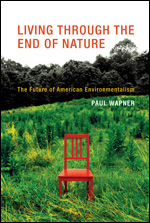 Paul Wapner
Paul Wapner
March 2010 | 184 pp.
Find online ($ 14)
Publisher's Description: Environmentalists have always worked to protect the wildness of nature but now must find a new direction. We have so tamed, colonized, and contaminated the natural world that safeguarding it from humans is no longer an option. Humanity's imprint is now everywhere and all efforts to "preserve" nature require extensive human intervention. At the same time, we are repeatedly told that there is no such thing as nature itself—only our own conceptions of it. One person's endangered species is another's dinner or source of income. In Living Through the End of Nature, Paul Wapner probes the meaning of environmentalism in a postnature age.
2) The Great Ocean Conveyor: Discovering the Trigger for Abrupt Climate Change, Princeton University Press
 Wally Broecker
Wally Broecker
February 2010 | 172 pp. | 40 line illus. 12 maps.
Find online ($20)
Publisher's Description: Wally Broecker is one of the world's leading authorities on abrupt global climate change. More than two decades ago, he discovered the link between ocean circulation and climate change, in particular how shutdowns of the Great Ocean Conveyor--the vast network of currents that circulate water, heat, and nutrients around the globe--triggered past ice ages. Today, he is among the researchers exploring how our planet's climate system can abruptly "flip-flop" from one state to another, and who are weighing the implications for the future. In The Great Ocean Conveyor, Broecker introduces readers to the science of abrupt climate change while providing a vivid, firsthand account of the field's history and development.
3) Bear Wrangler: Memoirs of an Alaska Pioneer Biologist, University of Chicago Press
 Will Troyer
Will Troyer
February 2010 | 256 pp.
Find online ($16)
Publisher's Description: Beginning in 1951, Will Troyer embarked on a thirty-year career with the U.S. Department of the Interior that included positions such as fish and game warden and manager of the Kodiak Island brown bear preserve. Troyer’s engaging prose affirms his passionate connection to the natural world, as he describes experiences such as being in the midst of a herd of 40,000 caribou. Bear Wrangler is an absorbing tale of one man’s experience as an authentic pioneer in the last vestiges of American wilderness.
4) State of the Wild 2010 - 2011: A Global Portrait, Island Press
 Wildlife Conservation Society
Wildlife Conservation Society
February, 2010 | 182 pp.
Find online ($21)
Publisher's Description: State of the Wild is a biennial series that brings together international conservation experts and writers to discuss emerging issues in the conservation of wildlife and wild places. Each volume in the series combines evocative writings with a fascinating tour of conservation news highlights and vital statistics from around the world. One-third of each volume focuses on a topic of particular concern to conservationists. This 2010–2011 edition considers how destabilization and war affect wildlife and wild places.
5) Beetles in Conservation, Wiley-Blackwell
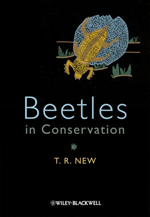 Tim New
Tim New
March 2010 | 248 pp. | 9.4 x 7.3 in
Find online ($71)
Publisher's Description: Beetles, the most diverse group of insects, are often abundant in terrestrial and freshwater ecosystems. Many species are under threat from human changes to natural environments, and some are valuable tools in conservation, because they respond rapidly to changes that occur. Knowledge of these responses, of both abundance and composition of assemblages, enable use of some beetles to monitor environmental changes. This book is the first major global overview of the importance of conservation of beetles, and brings together much hitherto scattered information to demonstrate the needs for conservation, and how it may be approached. It is a source of value to students, research workers, conservation biologists and ecosystem managers as an introduction to the richness and importance of this predominant component of invertebrate life.
6) Birds of Europe: 2nd Edition, Princeton University Press
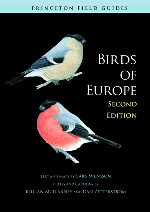 Text and maps by Lars Svensson
. Illustrations by Killian Mullarney and Dan Zetterström
Text and maps by Lars Svensson
. Illustrations by Killian Mullarney and Dan Zetterström
February 2010 | 416 pp. | 5 x 7 | 3,500+ color illus. 848 maps.
Find online ($20)
Publisher's Description: Since it was first published a decade ago, Birds of Europe has become the definitive field guide to the diverse birdlife found in Europe. Now this superb guide has been brought fully up to date with revised text and maps along with added illustrations. Uniquely designed for easy use in the field, this expanded edition covers all 772 species found in the region as well as 32 introduced species or variants and 118 very rare visitors. Detailed species accounts describe key identification features, voice, habitat, range, and size. More than 3,500 full-color illustrations depict every species and all major plumage variations, and color distribution maps provide breeding, wintering, and migration ranges for every species.
7) Evolutionary Behavioral Ecology, Oxford University Press
 Edited by David Westneat and Charles Fox
Edited by David Westneat and Charles Fox
February 2010 | 664 pp.
Find online ($45)
Publisher's Description: Evolutionary Behavioral Ecology is intended to be used as a text for graduate students and a sourcebook for professional scientists seeking an understanding of the evolutionary and ecological processes shaping behavior across a wide array of organisms and a diverse set of behaviors. Chapters are written by leading experts in the field, providing a core foundation, a history of conceptual developments, and fresh insight into the controversies and themes shaping the continuing development of the field. Essays on adaptation, selection, fitness, genetics, plasticity, and phylogeny as they pertain to behavior place the field in the broader context of ecology and evolution. These concepts, along with a diversity of theoretical approaches are applied to the evolution of behavior in a many contexts, from individual decision-making of solitary animals through to complex social interactions.
8) March of the Microbes: Sighting the Unseen, Harvard University Press
 John Ingraham
John Ingraham
February 2010 | 336 pp.
Find online ($20)
Publisher's Description: Though nothing in the natural world would be quite the same without them, microbes go mostly unnoticed. They are the tiny, mighty force behind the pop in Champagne and the holes in Swiss cheese, the granite walls of Yosemite and the white cliffs of Dover, the workings of snowmaking machines, Botox, and gunpowder; and yet we tend to regard them as peripheral, disease-causing, food-spoiling troublemakers. In this book renowned microbiologist John Ingraham rescues these supremely important and ubiquitous microorganisms from their unwonted obscurity by showing us how we can, in fact, see them—and appreciate their vast and varied role in nature and our lives. Though we might not be able to see microbes firsthand, the consequences of their activities are readily apparent to our unaided senses.
9) The Gulf of California: Biodiversity and Conservation, University of Arizona Press
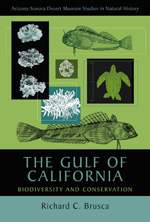 Richard C. Brusca
Richard C. Brusca
March 2010 | 400 pp.
Find online ($65)
Publisher's Description: This edited volume contains contributions by twenty-four Gulf of California experts, from both sides of the U.S.–Mexico border. From the origins of the Gulf to its physical and chemical characteristics, from urgently needed conservation alternatives for fisheries and the entire Gulf ecosystem to information about its invertebrates, fishes, cetaceans, and sea turtles, this thought-provoking book provides new insights and clear paths to achieve sustainable use solidly based on robust science. The interdisciplinary, international cooperation involved in creating this much-needed collection provides a model for achieving success in answering critically important questions about a precious but rapidly disappearing ecological treasure.
10) On Fact and Fraud: Cautionary Tales from the Front Lines of Science,
Princeton University Press
 David Goodstein
David Goodstein
February, 2010 | 184 pp.
Find online ($ 18)
Publisher's Description: Fraud in science is not as easy to identify as one might think. When accusations of scientific misconduct occur, truth can often be elusive, and the cause of a scientist's ethical misstep isn't always clear. On Fact and Fraud looks at actual cases in which fraud was committed or alleged, explaining what constitutes scientific misconduct and what doesn't, and providing readers with the ethical foundations needed to discern and avoid fraud wherever it may arise.
11) The Mediterranean Region: Biological Diversity Through Time and Space
Oxford University Press
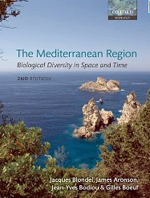 Jacques Blondel, James Aronson, Jean-Yves Bodiou and Gilles Boeuf
Jacques Blondel, James Aronson, Jean-Yves Bodiou and Gilles Boeuf
March 2010 | 400 pp. Find online ($53)
Publisher's Description: There is no other recent textbook devoted solely to Mediterranean evolutionary ecology, and a synthesis of the many recent advances is now overdue. This new work builds on the success and reputation of the first edition, although the text has been updated and expanded to document recent changes to biodiversity, new ecological and evolutionary insights, and the challenges for the future. These changes include the addition of two new chapters devoted to the Mediterranean Sea itself, and especially the coastal areas. Throughout the book, the pressing issues of global change (especially climate warming) are addressed, in conjunction with changing land use, and in terms of their potential impact on biota, communities, ecosystems, and landscapes.
12) Beyond Naturalness: Rethinking Park and Wilderness Stewardship in an Era of Rapid Change, Island Press
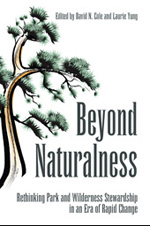 David N. Cole, Laurie Yung
David N. Cole, Laurie Yung
March, 2010 | 368 pp.
Find online ($31)
Publisher's Description: The central concept guiding the management of parks and wilderness over the past century has been “naturalness”—to a large extent the explicit purpose in establishing these special areas was to keep them in their “natural” state. But what does that mean, particularly as the effects of stressors such as habitat fragmentation, altered disturbance regimes, pollution, invasive species, and climate change become both more pronounced and more pervasive?
Beyond Naturalness brings together leading scientists and policymakers to explore the concept of naturalness, its varied meanings, and the extent to which it provides adequate guidance regarding where, when, and how managers should intervene in ecosystem processes to protect park and wilderness values. The main conclusion is the idea that naturalness will continue to provide an important touchstone for protected area conservation, but that more specific goals and objectives are needed to guide stewardship.
13) Why Do Bees Buzz: Fascinating Answers to Questions About Bees
Rutgers University Press
 Elizabeth Capaldi Evans and Carol A. Butler
Elizabeth Capaldi Evans and Carol A. Butler
February, 2010 | 256 pp.
Find online ($ 15)
Publisher's Description: With clarity and depth, bee biologist Elizabeth Capaldi Evans and coauthor Carol A. Butler examine the lives of honey bees, as well as other species such as orchid bees, bumblebees, and stingless bees. Accessible to readers on every level, and including the latest research and theory for the more sophisticated reader, the authors reveal more than one hundred critical answers to questions about the lives of bees.Concepts about speciation, evolutionary adaptation and pollination, as well as historical details about topics such as Mayan beekeeping and the appearance of bees in rock art, are arranged in easy-to-follow sidebars that highlight the text. Color and black and white photographs and drawings enhance the beauty and usefulness of Why Do Bees Buzz?
14) Recent Mammals of Alaska University of Alaska Press
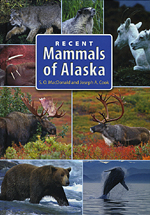 Stephen O. MacDonald and Joseph A. Cook
Stephen O. MacDonald and Joseph A. Cook
February, 2010, 399 page, 110 maps, 50 line drawings
Find online ($34)
Publisher's Description: From the polar bear and the gray wolf to the walrus and river otter, there are 115 species of mammals in Alaska that have never been fully catalogued until now. Biologists Joseph A. Cook and Stephen O. MacDonald have compiled here the first comprehensive guide to all of Alaska’s mammals, big and small, endearing and ferocious.
Through extensive fieldwork and research the authors have produced a unique and authoritative reference. Detailed entries for each species include distribution and taxonomic information, status, habitat, and fossil history. Appendices include quick reference listings of mammal distribution by region, specimen locations, conservation status, and the incidence of Pleistocene mammals. The guide is generously illustrated with line drawings by Alaskan artist W. D. Berry and includes several maps indicating populations and locations of species.
15) The Biology of Small Mammals John Hopkins University Press
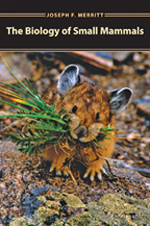 Joseph F. Merritt
Joseph F. Merritt
February, 2010 | 336 page
Find online ($32)
Publisher's Description: The Biology of Small Mammals is the first exploration of the lives of small mammals undertaken in decades. Mammalogist Joseph F. Merritt offers an engaging, in-depth discussion about a diverse array of small mammals, from the rare Kitti's hog-nosed bat of Southeast Asia to the bizarre aye-aye of Madagascar to the familiar woodchuck of North America. Small mammals include those mammals weighing under five kilograms (approximately eleven pounds). Merritt introduces the various species that fall under this heading, then follows with chapters that cover such topics as behavior, modes of feeding, locomotion, habitat use, reproduction, and coping with heat loss.
16) Grasses of the Intermountain Region Utah State University Press
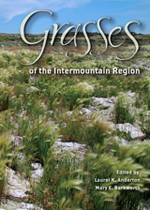 edited by Laurel K. Anderton & Mary E. Barkworth
edited by Laurel K. Anderton & Mary E. Barkworth
February, 2010 | 399 page, 110 maps, 50 line drawings
Find online ($70)
Publisher's Description: Grasses of the Intermountain Region is a modification of the two grass volumes of the Flora of North America (FNA). It is designed for identifying members of the Poaceae in the region between the Sierra Nevada and Rocky Mountains, and is intended for use by botanists working with the grasses in this intermountain region of North America.
The reduction in number of taxa included from FNA has reduced the length of the keys and made it possible to include, in a single volume, descriptions and illustrations for all taxa treated as well as provide distribution maps for species that are established in the area. Another difference from the FNA volumes is that the maps in this volume show only records from IMR and adjacent areas rather than the full North America range of the taxa.




 Share Article
Share Article
Reader Comments